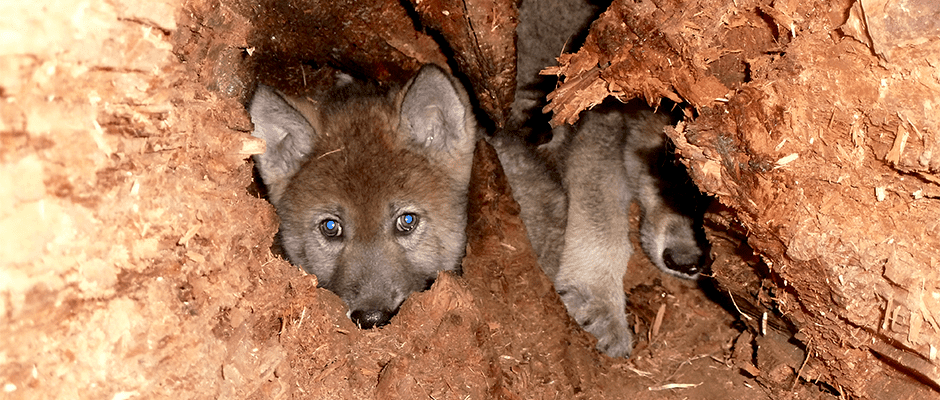Share this article
JWM: Harvest may not impact where wolves rear pups
How does hunting affect where gray wolves (Canis lupus) bring up their pups? A new study from Idaho suggests that despite the presence of hunters, wolves rear their offspring in favorable habitat with water and open space.
“For wolves, mortality usually takes place in the first six months, so the choice of pup rearing sites is important for pup survival and the reproductive success of the pack,” said Caitlin Jacobs, lead author on the paper published in the Journal of Wildlife Management. “Wolves subject to harvest did not use less suitable habitat to raise pups. Wet meadows with standing ephemeral water may provide optimal pup-rearing habitat where harvest is a dominant source of mortality.”
A wildlife research assistant with the Idaho Department of Fish and Game, Jacobs’ team examined where wolves inhabiting three regions across the state raised their young in comparison to where they had done so before they became harvestable in 2010. The researchers identified potential pup-rearing sites with a habitat model — generated from GPS points collected between 1996 and 2006 — that they’d relied on to locate these damp grassy areas when the wolves were under protection. From 2012 to 2015, field technicians conducted howl surveys to locate wolves in areas where they were raising pups. If any wolves answered their calls, they searched for scats and submitted them for genetic testing to learn more about the numbers of pups, adults, males, females and total individuals there for population monitoring.
The results revealed that even harvested wolves looked after their offspring in wet meadows and did not choose sites farther away from roads. This implies that water and other resources in the meadows, as well as road access that makes traveling and hunting easier, may offset the risk of human-caused mortality, Jacobs said.
“This habitat may be ideal in a landscape with mortality caused by humans,” she said. “Because wolves use them regardless of the risk from humans, where there is high harvest, it shows how important these habitats are to protect. This habitat is also important to consider when assessing livestock depredation risk and areas of wolf recolonization.”
The findings from this research were surprising, Jacobs said, because it contradicted previous ones from Europe, where human activity had deterred wolves from their preferred habitats.
TWS members can log in to Your Membership to read this paper in the Journal of Wildlife Management. Go to Publications and then Journal of Wildlife Management.
Header Image: Gray wolf pups rest in a cedar log den in northern Idaho. ©Caitlin Jacobs








